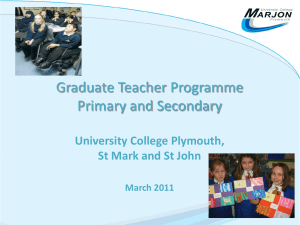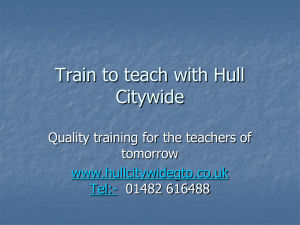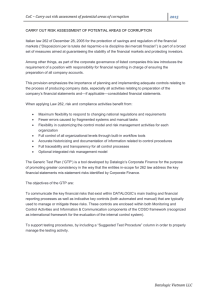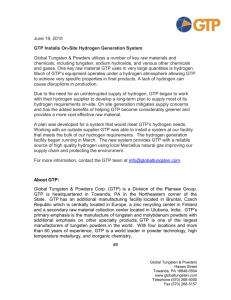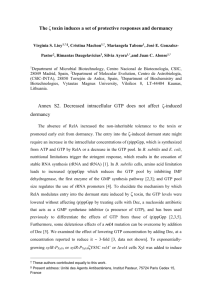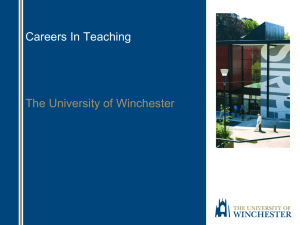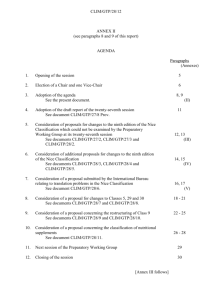Philip Bayley GTP presentation
advertisement
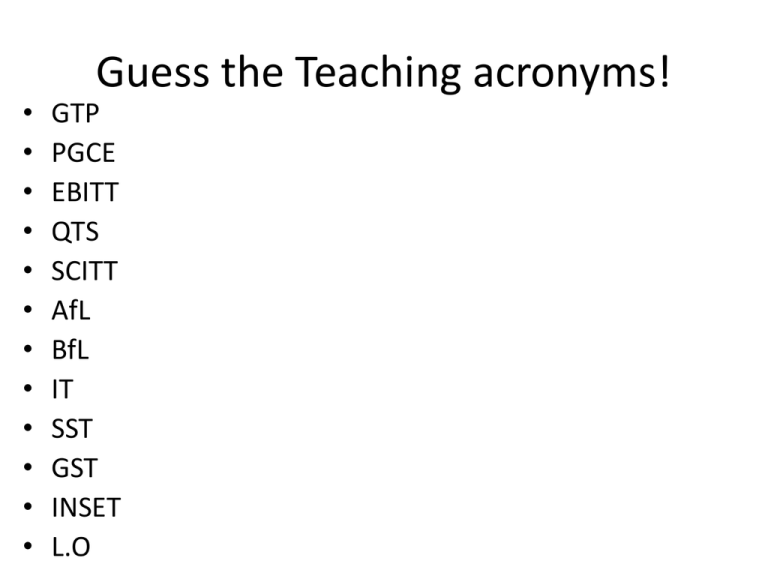
• • • • • • • • • • • • Guess the Teaching acronyms! GTP PGCE EBITT QTS SCITT AfL BfL IT SST GST INSET L.O Guess the Teaching acronyms! • • • • • • • • • • • • GTP PGCE EBITT QTS SCITT AfL BfL IT SST GST INSET L.O. • • • • • • • • • • • • Graduate Teacher Program Postgraduate certificate in education Employment-based initial teacher training Qualified Teacher Status School Centred Initial Teacher Training Assessment for Learning Behaviour for Learning Institute Tutor School Subject Tutor General School Tutor In-Service Education and Training Learning Objective Today we’ll cover: • What is the GTP? • What are the differences between GTP and PGCE? • What support can you expect on the GTP? • How can you apply for the GTP? • How should you prepare for the GTP? For all routes into teaching: • You will need to be a graduate, with a 2.2 or above. • You will need Maths and English GCSE grade C or above • To teach primary students, you will also need Science GCSE grade C or above. Postgraduate routes • Postgraduate certificate in education (PGCE) masters level • Professional graduate certificate in education university-led training full-time, part-time or flexible distance learning • School-centred initial teacher training (SCITT) - school-based training full-time All routes lead to qualified teacher status (QTS) GTP • SCITT (School-centred initial teacher training) • EBITT (Employment based initial teacher training) Differences with the PGCE • You get thrown in at the deep end! (Minimum 155 Teaching days compared with minimum 100 for PGCE) • You get no training before entering a school environment • You do the vast majority of your teaching in 1 school, not in lots of smaller placements • You get paid (See the unqualified teacher pay scale) http://www.tda.gov.uk/get-intoteaching/salary/unqualified-teacher-pay-scales.aspx (Or just google: Unqualified Teacher Pay Scale) GTP support • IT • GST • SST • Helping you towards completing the QTS standards. Google ‘Q Standards’ and look them up on www.tda.gov.uk • Portfolio Applying for a GTP • http://www.tda.gov.uk/get-intoteaching/teacher-training-options/gtp/howto-apply.aspx • This website will help you to find training providers. Although it tells you some providers help you to find a school, this is not the norm. • Therefore, you need to find a school that is willing to take you on to do a GTP before applying. When you’ve found your school and training provider: • Personal statement • Interview How to make a successful application for a teacher training course • • • • • • What have you done to prepare yourself for teaching? Why will you enjoy teaching? Why will you enjoy teaching your subject? How are your previous studies relevant to teaching? What can you offer apart from your own specialist subject? What skills and knowledge can you bring from your previous work experience? • What are you doing now which makes you a good candidate for teaching? How to make a successful application for a teacher training course Avoid at all costs: • “I have always wanted to be a teacher.” • “I believe that teaching is a worthwhile career.” You need to show: • • • • • • • Enthusiasm. Your motivation to teach. Your ability to relate to and communicate with young people. Your academic abilities. Your desire for self-development. Your potential contribution to school life. Your personal and social skills; give examples of how you have used these skills. How to make a successful application for a teacher training course Practical tips • Use the internet to research the latest developments in education. • Try the TDA’s interactive interview www.teach.gov.uk/interactiveinterview and application assistant. • Look at training providers’ websites. • You can find out more information on providers and their courses, visit www.tda.gov.uk/pprofiles How to make a successful application for a teacher training course • Your interview – Interviews usually take place over a full day and the training provider will let you know the programme for the day. – You will be asked about your experience of working with young people, your commitment to teaching, and your relevant knowledge and skills. – It will include an individual interview and group tasks such as group discussions, presentations, and teaching minilessons. – For secondary courses you may be asked to bring a portfolio showing your achievements in your subject. – The aim of the day is for you and the interviewers to find out if teaching is right for you. Application deadlines • Final Year students: To start in September 2011, some have already passed. • Through the TDA website you can check what providers still have places for each subject. Extra tips and summary The GTP is an excellent route into teaching for those who want a self-guided learning experience, working alongside experienced teachers, as well as being paid. Places on courses are highly competitive, so make sure you get some experience to help you stand out from the crowd. Remember that this can include any work with children, not just in schools. For more information, visit: www.tda.gov.uk or feel free to ask me any questions now or afterwards.
